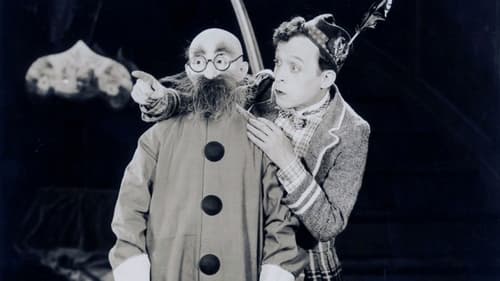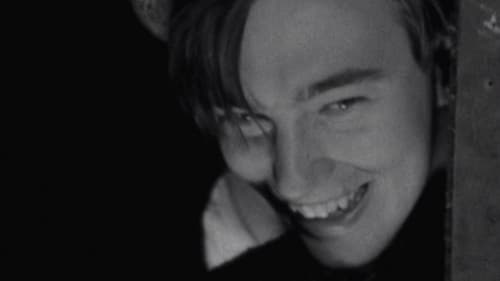A Chairy Tale (1957)
Género : Comedia, Animación
Tiempo de ejecución : 12M
Director : Claude Jutra, Norman McLaren
Sinopsis
An ordinary looking chair refuses to be sat upon.

With a similar dreamy mood like its predecessor "Take the 5:10 to Dreamland" (1976) this clip starts with a boy getting into his bed. The camera zooms in into the boy's mind and a slow, sad waltz (i.e."Valse Triste") accompanies images of a locomotive, a miner, the globe, the sky, a sheep heard, etc. Disparate elements, but if one concentrates only at the movement of the figures, one can perceive a commotion, slowly livening up: The starting wheels of the heavy locomotive, the tired miner pushing the heavy cart of coal bricks, the globe smoothly turning around and around, the clouds imperceptibly floating in the sky, the sheep idly moving in the herd, etc. We reach the first climax when a mannequin opens her coat like a flower. The second big crescendo spurts out from a "water hose", after watching schoolgirls doing gymnastics for quite a while. A sad, but nostalgic aftertaste lingers in the end when funeral cars drive away through a flooded area…

Director Joseph Cornell evokes the nostalgia of childhood by filming a children's party.

With the screen split asymmetrically, one part in positive, the other negative, the film documents the evolution of simple celled organic forms into chains of cells then more complex images from tribal cultures and contemporary modernist concepts. The images react, interpenetrate, perhaps attack, absorb and separate, until a final symbiosis (or redemption?) is achieved.

An experimental short film of images and music made by Norman McLaren.

An illustration of a traditional French Canadian song in the form of progressing cutouts and still pictures.

An avant-garde montage of a boxing match, based on a poem by Paul Werrie.

Robert Breer animation from 1969. 16mm, color, silent, using spray paint & stencils.

A series of terrifying dramas of male-female relationships offset against the background of a New York tenement.

A sense of order is the necessary basis of any good social organisation. To illustrate this axiom, Kiarostami presents a series of paired scenes in this educational short film in which the same action is first shown in an organised way and then in an anarchic one. The film crew, however, finds it difficult to organise disorder.

Motion Painting No. 1 is a 1947 experimental short animated film in which film artist Oskar Fischinger put images in motion to the music of Johann Sebastian Bach’s Brandenburg Concerto no. 3, BWV 1048. It is a film of a painting (oil on acrylic glass); Fischinger filmed each brushstroke over the course of 9 months. In 1997, this film was selected for inclusion in the United States National Film Registry by the Library of Congress as being “culturally, historically, or aesthetically significant”.

A short film where circus performers entertain children.

When a mysterious figure appears to cause a series of disruptions at the Frisbie Home in New York, word goes out to Scotland Yard that the Fuzz-Faced Phantom is at work. Soon, Charley MacNeesha and his assistant MacGregor are sent across the ocean to investigate.

Four young men and a young woman sit in boredom. She smokes while one strums a lute, one looks at a magazine, and two fiddle with string. The door opens and in comes a young man, cigarette between his lips, a swagger on his face. The young woman laughs. As the four young men continue disconnected activities, the other two become a couple. When the four realize something has changed, first they stare at the couple who have kissed and now are dancing slowly. The four run from the house in a kind of frenzy and return to stare. The power of sex has unnerved them.

A fast-paced rhythmic impression of dancers, musicians and sportsmen at a highlands event.

"Studie II (Hallucinationer)" (Study II (Hallucinations)) (1952), comprises twelve staged scenes that were modelled after a set of drawings. Accompanied by metallic sounds, various body parts, limbs and objects form surrealistic collages against the background of a black space. Peter Weiss intended to create associative images that can not be deciphered completely. Beyond any logical interpretation, he wanted to show pure inner feelings.

La marche des machines is a thundering, thumping symphony of turbines, belts, flanges, wheels and sparks.

A day at the carnival — sensational tent shows where miracles can be seen for the price of admission, boisterous noise of crowds and barkers, shrill and gaudy circus music, the violence of the street ten-fold. This is the substance of Everything Turns, Richter’s first sound film. At its premier at Baden-Baden Richter got into a fight with two Nazi officials who disliked the film's ‘modernism.’ Yet in 1936 it was awarded first prize for artistic merit by the Nazis, with Richter’s name suppressed from the credits. He had long since left Germany.

Little Stabs at Happiness is a collection of silent shorts Jacobs shot from the period of 1959-1963. Jaunty tunes (and a somber reflection) accompany the footage.

A blond and a raven-haired beauty move with verve and style through a changing landscape. The fabric of their dresses flows and floats, adding to their allure. One loses a shoe. A young man picks it up and pursues them on his bicycle.

P´tite Lili es un cortometraje francés dirigido por Alberto Cavalcanti en 1927. Se trata de una ilustración visual de una canción, La Dama de grava y Benech Lilie, con música para la versión en audio de 1930 por Darius Milhaud. Sólo hay una copia original de esta trágica historia e impresionista. La película cuenta la historia de Lili (la señora Catherine Hessling), huérfana de 16 años que ha perdido a toda su familia, pero ha conservado su pureza e inocencia. Por desgracia, un terrible destino le espera a esta niña optimista: en los barrios bajos de París se reunirá con un hombre que la llevará a ejercer la prostitución.













